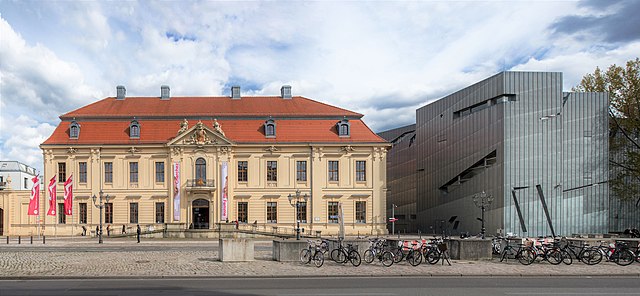Daniel Libeskind is a Polish-American architect, artist, professor and set designer. Libeskind founded Studio Daniel Libeskind in 1989 with his wife, Nina, and is its principal design architect.
Libeskind in front of his extension to the Bundeswehr Military History Museum in Dresden, 2011
Felix Nussbaum Haus (1998), Osnabrück, Germany
Libeskind's addition to the Royal Ontario Museum in Toronto (2007)
Libeskind's building for the London Metropolitan University has been the subject of criticism.
The Jewish Museum Berlin was opened in 2001 and is the largest Jewish museum in Europe. On 3,500 square metres of floor space, the museum presents the history of Jews in Germany from the Middle Ages to the present day, with new focuses and new scenography. It consists of three buildings, two of which are new additions specifically built for the museum by architect Daniel Libeskind. German-Jewish history is documented in the collections, the library and the archive, and is reflected in the museum's program of events.
The Kollegienhaus (1735) and Libeskind-Bau (1992)
The original building on Oranienburger Straße. Originally used as a hospice, the building was remodeled for use as a museum.
Arnold Zadikow's celebrated lost sculpture of The Young David was placed in the entrance of the museum
The Kollegienhaus building is the U-shaped building in the foreground; Libeskind's building is the adjacent zig-zag structure.








